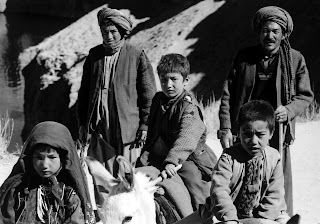The Face of Afghanistan (10) - Fleeing Home

Millions of Afghans had to flee from their home and leave behind their possessions, their families, and their friends. Today, Afghans are the second largest group of refugees and internally displaced persons in the world - after Palestinians. Over a quarter of the country’s population has sought refuge outside of the country prompting the United Nations to declare Afghanistan the major site of human displacement in the world. During the war with the URSS the number of Afghan refugees abroad escalated dramatically with as many as 2.5 to 3 million in Pakistan and another 1.5 million in Iran alone. About 150,000 were able to migrate permanently to other places including the United States, Australia, and various European countries. In addition, there were over one million internally displaced persons in Afghanistan in the same period. The majority have now returned to their place of origin, but the southern and western parts of the country still hosted in 2005 approximately 200,00...


